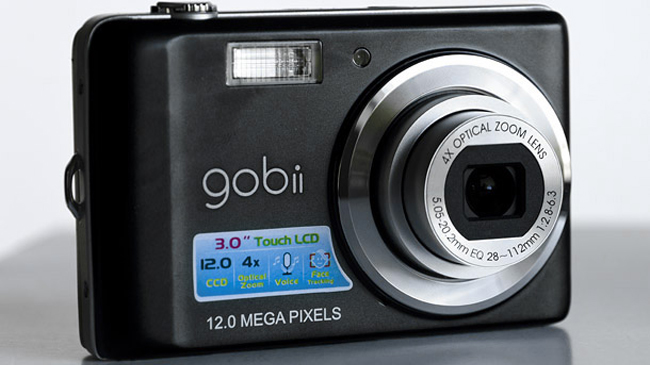SEO has entered a new era in 2026. AI tools are more powerful, users expect instant results and Google continues tightening its criteria for…
The Gobii 12MP camera turns you into an ‘almost pro’


A little while ago I sat with the Gobii 12MP camera box on my desk, about to open it and thinking to myself how cleverly named and packaged it was. On opening the box, I found all the usual contents neatly packaged: the camera itself, a fake suede camera bag, strap, Li-ion battery, battery charger, Kingston 4GB SDHC card and a USB cable to connect it to your computer. Above all, a neat and fairly comprehensive manual is included, as well as a software CD.
The little camera feels solid in the hand and boasts a 4X optical zoom and 5X digital zoom. Another plus is the digital image stabiliser and the 3” touch screen LCD display which makes negotiating the menus fairly simple.
The camera settings are customisable in all respects but I preferred to stick to the higher resolutions (4000 X 3000). This gives the 4GB card a range of around 700 photographs, which in my case was more than adequate. Being rather fussy about pixilation, I used the camera mostly with the digital zoom turned off. However, I found that the image stabiliser is a must when using the digital zoom if you plan to have usable photographs at all.
The camera provides 30 possible scenes, which can turn an occasional photographer into an almost-pro. The scenes span 5 menu screens. This becomes a headache when you need to access a particular scene quickly to capture that special moment. In the end, I opted for the Program setting where I could select my own ISO settings and managed some very satisfying results. By the way, the ISO settings provide a range from 100 to 3200 and also an auto setting. Other very useful and satisfying scenes that I used are Backlight, Sunset and Night scenes.
Focus can also be customised to meet your requirements and the close focus setting (only available when the zoom is not in use) provides very pleasing results. The aperture range, f2.8 to F6.3, provides enough opportunity to get a fair depth of field result.
Attaching the camera to your computer or printer is very simple and straightforward using the cable provided. Once connected the camera prompts you to choose your connection type, either computer or printer. Using a computer, the camera is read as an external drive making access to and transferring of your photographs a walk in the park.
Although the camera feels very solid, the controls have a very cheap plastic feeling to them and the combined battery/memory card cover is somewhat feeble. Another major turnoff is that there is not much warning when the battery runs down and the camera turns off seconds after the first warning of a low battery is given. Perhaps I missed a setting for this, but it caught me by surprise on two occasions, after which I put the battery on charge whenever the camera was not in use. Not an advisable solution, but at least I managed to snap when I wanted to.
This is not a camera for serious photographers, but it makes a good companion when you want to travel light and still have presentable photographs and bright memories. Knowing my kids, it would also go a long way to keep them snapping their memories.
Image: Jarrod.co.za
